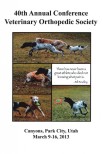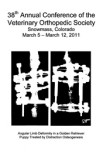Objective—To evaluate clinical variables assessed during the first 24 hours of hospitalization as prognostic indicators for nonambulatory cattle treated by use of a flotation tank.
Design—Retrospective case series.
Animals—51 nonambulatory cattle that underwent flotation treatment.
Procedures—Signalment, history, serum biochemical analyses, patient behavior during flotation, and outcome data were collected from medical records. Outcome was survival to discharge from the hospital or nonsurvival (death or euthanasia). Data were analyzed by use of Wilcoxon rank sum, Fisher exact, and χ2 tests.
Results—19 of 51 cattle survived. Survivors and nonsurvivors did not differ significantly with regard to median weight; age; stage of lactation; duration of recumbency prior to flotation; serum potassium, ionized calcium, or phosphate concentrations at admission to the hospital; or serum creatine kinase activity (value at admission to the hospital, highest value, and last recorded value). Cattle that were able to walk out of the tank after the first flotation treatment were 4.8 times as likely to survive as those that could not. Cattle that did not eat during flotation treatment were 1.9 times as likely to die as those that ate. Cattle that stood apparently normally on all limbs during the first flotation treatment were 2.9 times as likely to survive as those that had an asymmetric stance or were unable to stand.
Conclusions and Clinical Relevance—Results indicated that objective variables evaluated during the first 24 hours of hospitalization and flotation treatment are associated with outcome among nonambulatory cattle; findings might assist in logical decision making with respect to treatment options.









